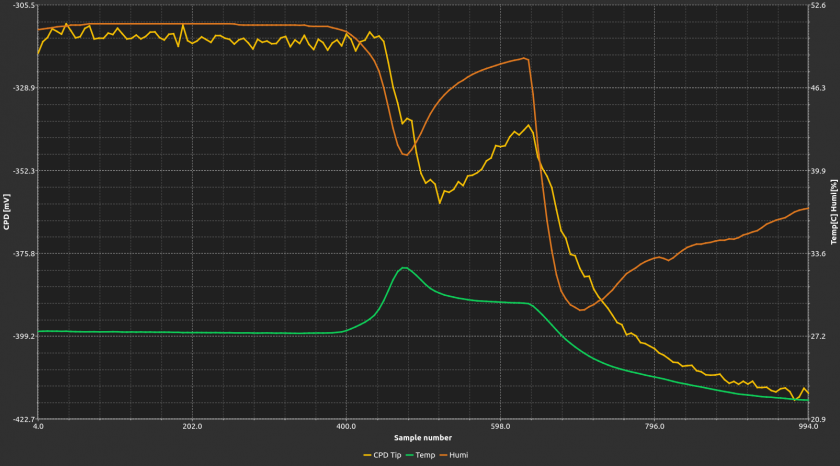The incomplete Kelvin Probe theory
Kelvin Probe measurements are relative. They reveal, if done correctly, a Contact Potential Difference (CPD or Volta potential) between a sample of interest and the probe’s tip. This result is usually converted to the work function of the sample if the tip’s work function is known.
That was a common practice since the invention of the instrument in the 19th century.
The problem is that no Kelvin Probe tracks the work functions changes of its tip. Thus, the measured CPD contains contributions of sample work function relative to the tip work function which are two unknown quantities serviced by a single equation for their difference. So, the system is incomplete as we have fewer equations than unknowns.
This problem cannot be mitigated neither by using work function references like HOPG nor by augmenting the CPD measurement with, so called, Absolute Photoemission Spectroscopy (APS). “So called” because this kind of measurement despite is optimistic name is as relative as the CPD measurement itself. The (APS) suffers from the the same shortcoming — more unknowns than the equations.
The Complete Kelvin Probe
Recently, researchers in Instytut Fotonowy stumbled upon an elegant solution to that problem. It turns out that a minor modification to the Kelvin Probe hardware and redesigning the measurement procedure generates one more unknown but also two more linear equations! That means that finally the Kelvin Probe theory is complete as it has as many independent linear equations as unknowns!
The system that employs that discovery is called the Complete Kelvin Probe. Sure enough it has delivered first eyebrow raising lessons. For measurements in ambient air the supposedly stable gold tip (gold line in the picture) varies way more during CPD measurement than a sample when humidity and temperature is changing. See the forum post for more details.

Figure: relative humidity (orange), temperature (green), probe’s tip CPD (gold).
